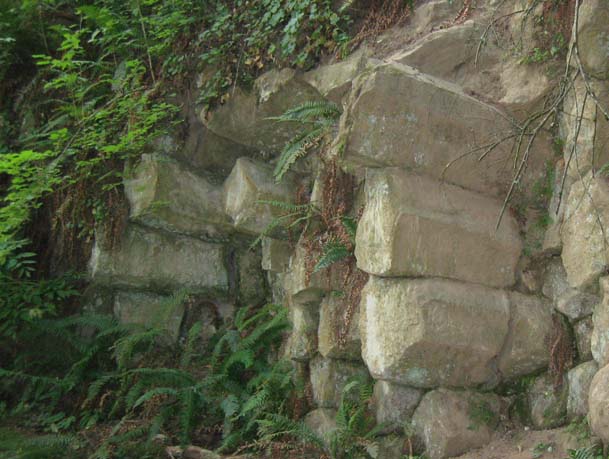Pinnacle Peak is a 1000 foot high dormant volcano standing alone in the flat farmland south of the town of Enumclaw. One of the things that makes it so special is the formations of columnar basalt near the summit. Columnar basalt is a common sight in eastern Washington, but it is seen far less frequently here on the west side of the state.

Basalt is volcanic rock, formed of molten lava that erupts from fissures in the earth's crust or in this case, a volcano. Columnar basalt is the result of the cooling process on a thick lava flow. Cracks resembling a honeycomb form in the lava as it cools, similar to the way a mud puddle cracks after the water evaporates. When the lava is very thick, the area near the surface cools faster than the hot body of the interior, and the resulting tensile stress causes the rock to crack. These cracks are known in the geology world as columnar joints, and they extend inward from and perpendicular to the cooling surface. Because the cooling air is usually above a pool of lava, the columnar joints are usually vertical. But not always. Sometimes lava can flow from the side of a volcano and the cooling surface is lateral. This results in horizontal columns.
The posted coordinates and reference point for this earthcache take you to examples of both horizontal and vertical columnar joints in the basalt near the top of Pinnacle Peak. Go to both points and observe what you see there.
To log this earthcache, email me with the answers to the following two questions. Do not post the answers in your log.
1. Are the vertical columns at a higher or lower elevation than the horizontal columns?
2. The ends of the columns are in the shape of a polygon. Are they all hexagons? If not, what do you see?
Do not post your answers in your log or it will be deleted.
Please also post a photo of yourself with one of the columnar basalt formations. The photo is optional but strongly encouraged!
Update January 2013: This EarthCache was featured in a Geocaching.com video.